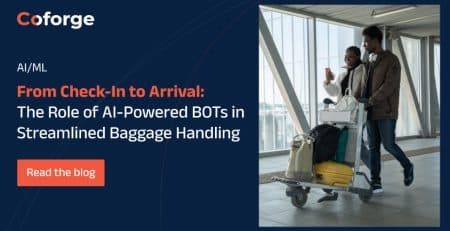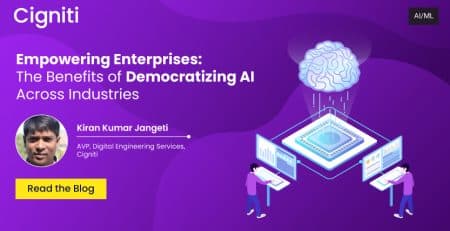Benefits of Small Language Models in Healthcare and Life Sciences
|
Listen on the go!
|
In the field of Natural Language Processing (NLP), two prominent terms frequently arise: Small Language Models (SLMs) and Large Language Models (LLMs). While both play significant roles across various industries, including healthcare and life sciences (HC-LS), their applications and advantages diverge depending on the context and requirements of the task.
SLMs are models with relatively limited parameters tailored for specific tasks or domains. They require fewer resources and are quicker to train and deploy. For example, in Clinical Decision Support Systems, SLMs assist doctors by providing rapid, domain-specific answers to medical queries. In Electronic Health Records (EHR) Management, these models help extract relevant information without the need for extensive computational power. Additionally, in Telemedicine Platforms, SLMs enhance patient interaction by understanding and responding to common health-related questions.
LLMs are NLP models with billions of parameters, trained on vast datasets, enabling them to understand and generate human-like text. Their versatility and power make them suitable for a wide range of applications. For instance, in medical research, LLMs analyze and summarize extensive collections of research papers, offering valuable insights and identifying trends. In virtual health assistants, these models facilitate more complex patient conversations, providing a comprehensive level of interaction. In predictive analysis, LLMs also forecast disease outbreaks by analyzing patterns across large datasets, including social media, news, and health records.
How SLMs Differ from LLMs
Here are a few factors explaining the difference between these models.
| SLMs | LLMs | |
| Size and Complexity | They typically require fewer parameters, making them smaller and less complex. This characteristic allows for swift training and lower computational resources. | Features billions of parameters, increasing complexity and necessitating substantial computational resources and extended training periods. |
| Training Data | Often trained on domain/use case-specific data, ensuring high specialization for particular tasks or fields. | Trained on diverse and extensive datasets, equipping them to handle various topics, though they may lack depth in specific areas. |
| Performance and Application Scope | Excel in tasks requiring domain-specific knowledge and rapid response times suitable for applications where precision in a narrow field is paramount. | They provide broader applications due to their generalized training, which can perform well across multiple domains. |
Advantages of Using SLMs for Small-Scale Industries and Hospitals
Here are a few advantages of using SLMs in small-scale industries and hospitals.
- Cost-Effectiveness – Significantly fewer computational resources for training and deployment are economically viable for small-scale industries and hospitals that may not possess extensive computational infrastructure. Lower operational costs make advanced NLP capabilities accessible even to those with limited budgets.
- Quick Deployment – Due to their smaller size and lower complexity, SLMs can be trained and deployed more quickly than LLMs. This rapid deployment is crucial in healthcare settings where timely implementation can directly impact patient care. A new SLM tailored to a specific disease outbreak can be swiftly developed and integrated into existing healthcare systems to provide immediate support to healthcare professionals.
- Specialization – SLMs can be tailored to specific tasks or domains within HC-LS, like analyzing medical records, assessing diagnostics, or managing patient interactions. For example, an SLM trained specifically on oncology-related data will be more adept at assisting oncologists with treatment recommendations than a generalized LLM.
- Energy Efficiency – With lower computational demands, SLMs are more energy-efficient, helping healthcare facilities reduce their carbon footprint while benefiting from advanced technological capabilities.
Significance of SLMs in Healthcare Applications
SLMs enhance healthcare efficiency and precision by streamlining processes, integrating with medical devices, and personalizing patient care.
- Patient Management: SLMs streamline patient data management, ensuring quick retrieval and processing of patient histories, treatment plans, and follow-up schedules. By optimizing these processes, healthcare providers (HPs) improve patient outcomes and enhance the overall efficiency of their operations.
- Medical Device Integration: SLMs enhance the functionality of medical devices by providing real-time analysis and feedback based on device data. For instance, an SLM integrated with a wearable health monitor can analyze the data in real time and alert HPs to any anomalies requiring immediate attention.
- Precision Medicine: SLMs assist in tailoring treatments to individual patients based on their unique medical histories and genetic profiles.
Significance of SLMs in Life Sciences Applications
SLMs significantly advance the efficiency and precision of life sciences by enhancing drug discovery, genomic data analysis, and the clinical trial process.
- Drug Discovery: SLMs can simulate biochemical interactions and assist in more efficiently identifying potential drug candidates. By focusing on the most promising leads, pharmaceutical companies can accelerate drug development and more quickly bring new treatments to the market.
- Genomic Data Analysis: SLMs interpret genomic data by identifying patterns and correlations within genomic data, leading to discoveries and advancements in the field.
- Clinical Trials: SLM streamlines the process of matching patients to clinical trials by quickly analyzing patient data and screening criteria. This ensures the trials are populated with suitable candidates and improves the screening process for new trials based on historical data.
Conclusion
Although both SLMs and LLMs have respective strengths, the choice depends on the application’s needs and resources. For small-scale industries and hospitals, SLMs offer a cost-effective, efficient, and specialized solution, making them a valuable tool in the ever-evolving fields of HC-LS. Their ability to deliver precise, domain-specific insights swiftly and economically makes them ideal for enhancing patient care and advancing medical research.
By adopting SLMs, HC-LS organizations can leverage the power of AI to improve patient outcomes, streamline operations, and drive innovation. As technology advances, the role of SLMs in these fields will only grow, paving the way for innovations and improved healthcare delivery.
Cigniti is dedicated to evolving our methods and practices, leveraging AI, ML, and Gen AI to integrate, develop, and ensure advanced digital innovations for our HC-LS partners.
Need help? Schedule a discussion with our Health care and Life Sciences experts to learn more about the benefits of Small Language Models in this industry.





Leave a Reply